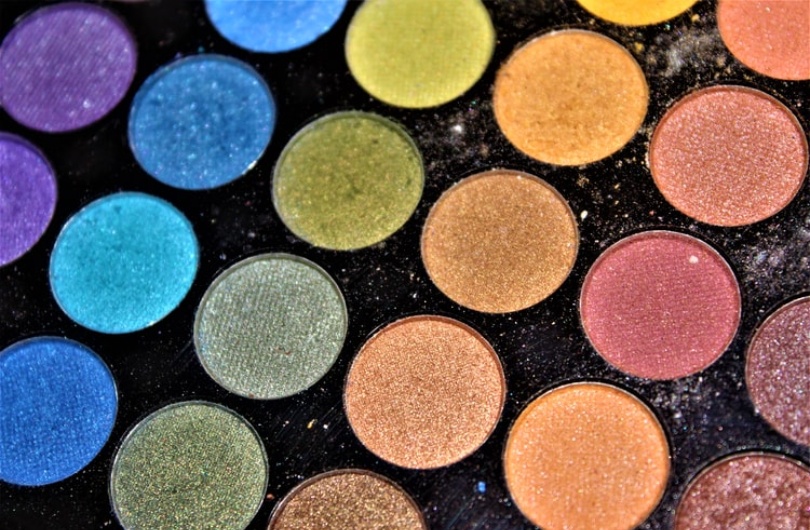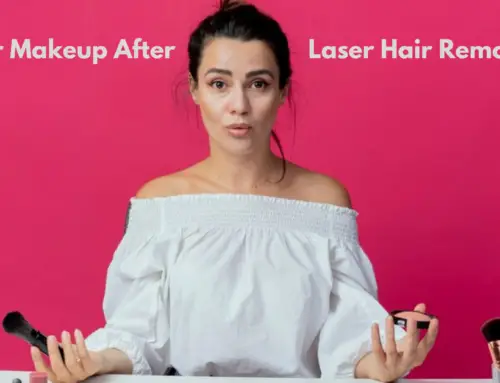Eyeshadow is a staple in the world of makeup, allowing you to create endless looks and express your personal style. But have you ever wondered if eyeshadow can go bad? The answer may surprise you. Eyeshadow, just like any other cosmetic product, has a shelf life and can spoil over time.
Understanding whether or not eyeshadow can go bad is essential for maintaining your makeup collection. Most eyeshadows have a lifespan of approximately one to two years, depending on the formulation and storage conditions. Over time, the pigments in eyeshadows can become less vibrant, the texture may change, and the product can develop an unpleasant odor. Using expired eyeshadow can lead to skin irritation or infection, which is why it’s crucial to pay attention to the expiration date and signs of spoilage.
Your eyeshadow can go bad over time. The shelf life of eyeshadow varies depending on the type (powder, cream, liquid) and how it is stored. Generally, powder eyeshadows can last up to 2 years, cream eyeshadows can last up to 12-18 months, and liquid eyeshadows can last up to 6-12 months. Look out for changes in texture, smell, or color, as these can indicate that the eyeshadow has gone bad and should be discarded.

Does Eyeshadow Go Bad?
Eyeshadow is a staple in many makeup collections. Whether you enjoy a natural everyday look or prefer bold and vibrant colors, eyeshadow allows you to express your creativity and enhance your eyes. But as with any cosmetic product, there comes a time when you wonder if it’s still safe to use. So, the question arises: Does eyeshadow go bad?
Understanding Eyeshadow Shelf Life
Eyeshadow, like any other makeup product, has a shelf life. With time, its quality deteriorates, and it may become less effective or potentially harmful to use. While there is no specific expiration date stamped on eyeshadow, it is crucial to know the signs that indicate your eyeshadow has gone bad.
The shelf life of eyeshadow depends on various factors, including its formulation, ingredients, and storage conditions. Generally, powdered eyeshadow can last for up to two years, while cream and liquid eyeshadows have a shorter lifespan of around six to twelve months. It’s important to note that these are general guidelines, and individual products may have different expiration dates specified by the manufacturer.
Now let’s explore the different signs that indicate your eyeshadow may have gone bad:
- Change in color or texture
- Unpleasant odor
- Irritation or sensitivity upon application
- Mold or bacterial growth
Proper Storage and Care
To extend the shelf life of your eyeshadow and prevent it from going bad, it’s essential to store and care for it properly. Here are a few tips:
- Keep your eyeshadow in a cool and dry place, away from direct sunlight and moisture.
- Ensure the eyeshadow container is tightly closed after each use to prevent air and humidity from affecting its quality.
- Avoid sharing eyeshadow with others to minimize the risk of contamination.
- Regularly clean your eyeshadow brushes to prevent the buildup of bacteria and prolong the life of your eyeshadow.
When to Discard Eyeshadow
If your eyeshadow exhibits any of the signs mentioned earlier, it is advisable to discard it. Using expired or contaminated eyeshadow can lead to skin irritation, eye infections, or other adverse reactions. Your health and safety should always come first, so it’s better to be cautious and replace your eyeshadow when necessary.
Maximizing Your Eyeshadow’s Lifespan
To make the most of your eyeshadow collection and ensure its longevity:
- Rotate your eyeshadows regularly to prevent overuse of a single product.
- Use clean brushes or applicators to avoid introducing bacteria or oils into the product.
- If you notice any changes in color, texture, or performance, consider using your eyeshadow as an alternative to other creative purposes, such as nail art or mixed-media art projects.
Frequently Asked Questions
1. Can eyeshadow cause an allergic reaction?
Eyeshadow can potentially cause an allergic reaction in individuals sensitive to certain ingredients. It’s essential to check the ingredient list and perform a patch test before applying new eyeshadows, especially those from unfamiliar brands.
2. How can I prevent my eyeshadow from drying out?
To prevent your eyeshadow from drying out quickly, make sure to close the container tightly after every use. Additionally, avoid exposing it to air and store it in a cool, dry place.
3. Can I salvage dried-out eyeshadow?
Yes, in some cases, you can revive dried-out eyeshadow by adding a few drops of a mixing medium or a suitable eyeshadow primer. Mix it with the eyeshadow using a clean tool or brush until it reaches a more usable consistency.
In Summary
Eyeshadow does have a shelf life, and it can go bad over time. It’s important to pay attention to signs of changes in color, texture, or smell, as these indicate that your eyeshadow may no longer be safe to use. Proper storage and care can help prolong its lifespan, but if you notice any signs of deterioration, it’s best to replace it. Prioritizing your health and safety should always be the top priority when it comes to using makeup products.
Key Takeaways
- Eyeshadow can go bad over time due to bacteria growth or changes in texture and color.
- Check the expiration date on your eyeshadow products.
- Pay attention to any changes in smell, texture, or color, as these may indicate that the eyeshadow has gone bad.
- If your eyeshadow has expired or shows signs of going bad, it is best to discard it.
- Proper storage, such as keeping eyeshadow in a cool and dry place, can help prolong its shelf life.
Frequently Asked Questions
Eyeshadow is a popular makeup product that many people use to enhance their eye makeup looks. However, like all cosmetics, eyeshadow has a shelf life and can go bad over time. In this article, we will answer some frequently asked questions about the expiration and shelf life of eyeshadow.
1. How long does eyeshadow last?
Eyeshadow typically lasts for about 1-2 years from the date of opening. However, this can vary depending on factors such as the quality of the eyeshadow, the storage conditions, and whether it has been exposed to moisture or bacteria. It is important to check the packaging or product label for any specific guidelines or expiry dates provided by the manufacturer.
If you notice any changes in the color, texture, or smell of your eyeshadow, it is best to discard it, as it may be a sign that it has gone bad. Using expired eyeshadow can lead to skin irritations, infections, or ineffective application.
2. How can I tell if my eyeshadow has gone bad?
There are a few signs that indicate your eyeshadow has gone bad. If you notice a change in the color or texture of the eyeshadow, such as it becoming dry, clumpy, or powdery, it is likely past its prime. Additionally, if there is a strong or unpleasant odor coming from the eyeshadow, it is a good indication that it has gone bad.
Using old or expired eyeshadow can potentially cause skin irritations, infections, or result in ineffective application, so it’s best to replace it if you suspect it has gone bad.
3. Can I use expired eyeshadow?
It is generally not recommended to use expired eyeshadow. As eyeshadow ages, its performance may decline, and it may not apply as smoothly or provide the desired color payoff. Additionally, expired eyeshadow can harbor bacteria or other microorganisms, which can lead to eye infections or other adverse reactions.
To ensure the safety and effectiveness of your eyeshadow, it is best to replace it once it has expired or shows signs of going bad.
4. How should I store my eyeshadow to prolong its shelf life?
To extend the shelf life of your eyeshadow, it is important to store it properly. Keep your eyeshadow in a cool, dry place away from direct sunlight, humidity, and moisture. Avoid exposing it to excessive heat or fluctuating temperatures, as this can affect its formulation and cause it to degrade.
Close the eyeshadow container tightly after each use to prevent air and moisture from entering. Additionally, avoid using wet or dirty brushes or fingers to apply eyeshadow, as this can introduce moisture or bacteria into the product.
5. Can I sanitize my eyeshadow to prolong its use?
While it is not possible to fully sanitize eyeshadow, there are some steps you can take to minimize the risk of bacterial contamination. You can gently wipe the surface of the eyeshadow with a clean tissue or alcohol wipe to remove any visible debris or buildup.
However, it is important to note that sanitizing eyeshadow does not extend its shelf life beyond its expiration date. If your eyeshadow has expired or shows signs of going bad, it is best to replace it for safety and optimal performance.

When Should You Throw Away Eye Makeup? Eye Doctor Explains
In summary, eyeshadow can go bad over time, just like other cosmetics. It is important to regularly check the expiration date and look out for any changes in color, texture, or scent. Using expired eyeshadow can lead to skin irritation or even infections.
To make your eyeshadow last longer, store it in a cool and dry place, avoid sharing it with others, and use clean brushes or applicators. Remember to replace your eyeshadow every 6-12 months to ensure the best performance and minimize any potential risks to your skin.






Leave A Comment